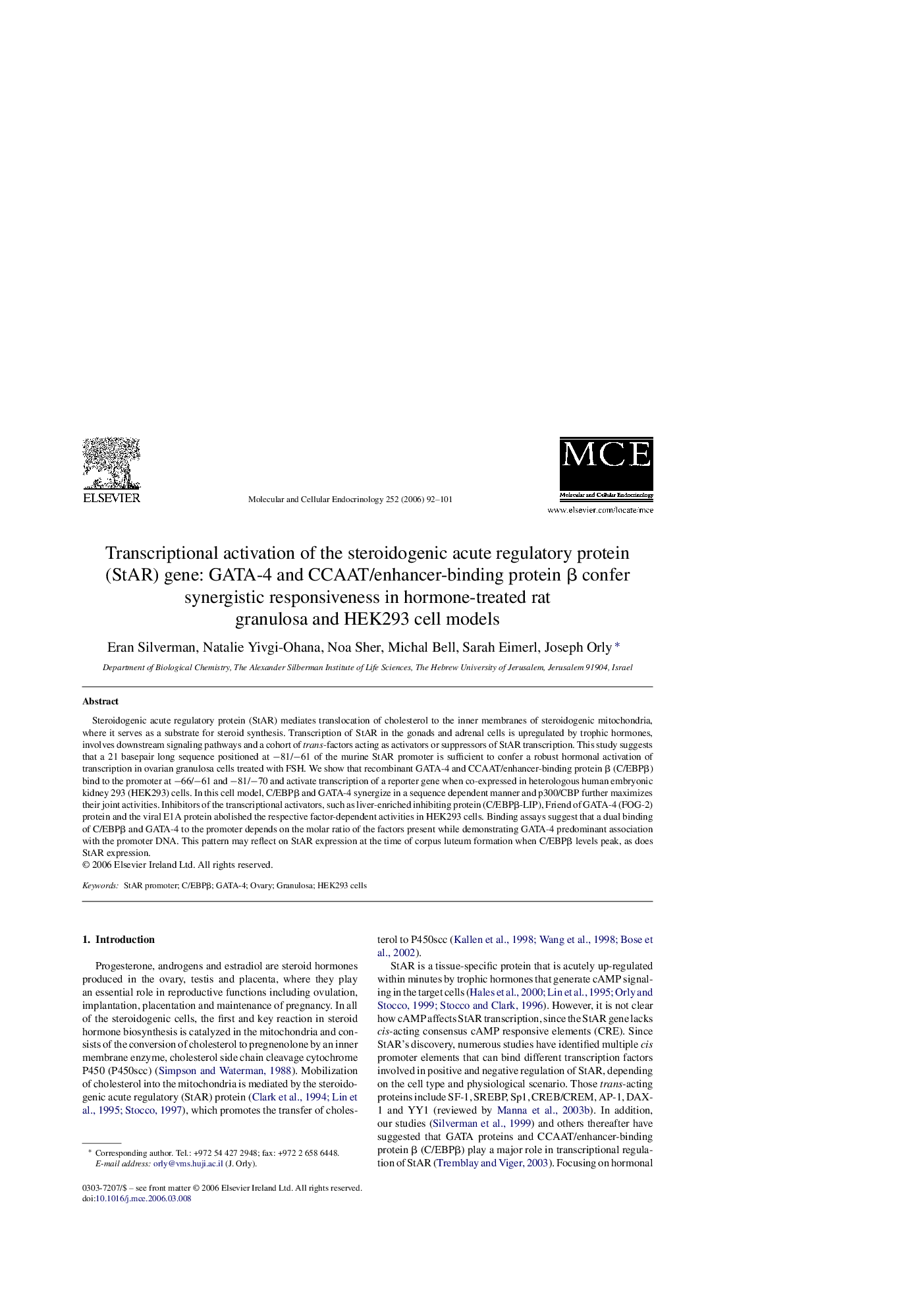| Article ID | Journal | Published Year | Pages | File Type |
|---|---|---|---|---|
| 2198209 | Molecular and Cellular Endocrinology | 2006 | 10 Pages |
Steroidogenic acute regulatory protein (StAR) mediates translocation of cholesterol to the inner membranes of steroidogenic mitochondria, where it serves as a substrate for steroid synthesis. Transcription of StAR in the gonads and adrenal cells is upregulated by trophic hormones, involves downstream signaling pathways and a cohort of trans-factors acting as activators or suppressors of StAR transcription. This study suggests that a 21 basepair long sequence positioned at −81/−61 of the murine StAR promoter is sufficient to confer a robust hormonal activation of transcription in ovarian granulosa cells treated with FSH. We show that recombinant GATA-4 and CCAAT/enhancer-binding protein β (C/EBPβ) bind to the promoter at −66/−61 and −81/−70 and activate transcription of a reporter gene when co-expressed in heterologous human embryonic kidney 293 (HEK293) cells. In this cell model, C/EBPβ and GATA-4 synergize in a sequence dependent manner and p300/CBP further maximizes their joint activities. Inhibitors of the transcriptional activators, such as liver-enriched inhibiting protein (C/EBPβ-LIP), Friend of GATA-4 (FOG-2) protein and the viral E1A protein abolished the respective factor-dependent activities in HEK293 cells. Binding assays suggest that a dual binding of C/EBPβ and GATA-4 to the promoter depends on the molar ratio of the factors present while demonstrating GATA-4 predominant association with the promoter DNA. This pattern may reflect on StAR expression at the time of corpus luteum formation when C/EBPβ levels peak, as does StAR expression.
